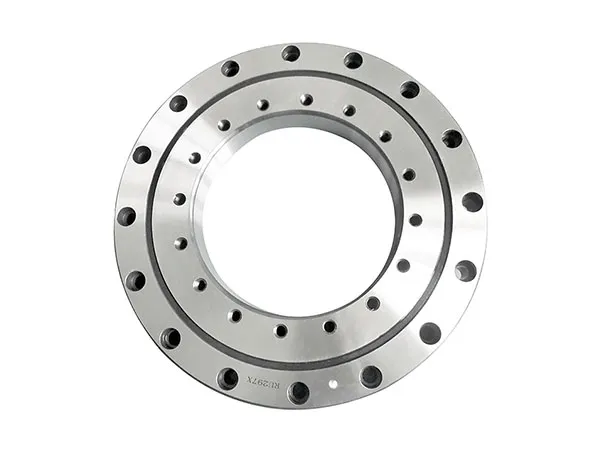Cojinetes de giro, también conocido como anillos giratorios, are crucial mechanical components used to support axial, radial, and tilting moment loads in various heavy-duty machines, como grúas, excavadoras, turbinas de viento, and rotating platforms. One of the most critical and common failures in slewing bearings is broken or damaged teeth on the gear ring.
Broken teeth on a slewing bearing can lead to serious operational issues, including abnormal noise, vibración, reduced load capacity, and eventually, total equipment failure. This kind of damage is often a result of improper installation, overloading, Se le presentarán brevemente las cuatro formas de falla de la vía., or misalignment during operation.
Causes of Broken Teeth in Slewing Bearings

Sobrecarga:
Static Overload: Applying a load greater than the bearing’s rated static capacity, even momentarily, can fracture teeth.
Dynamic Overload/Shock Loads: Sudden impacts, jerky movements, or unexpected high loads during operation (p.ej., a crane hitting an obstruction) can exceed the tooth strength.
Uneven Load Distribution: If the mounting structure is not flat or rigid enough, or if bolts are unevenly torqued, the load can concentrate on a few teeth, leading to overload and fracture.
Poor Lubrication:
Lubricación insuficiente: Lack of lubricant increases friction and heat, leading to accelerated wear (picaduras, scuffing) which weakens the teeth and can eventually cause them to break.
Incorrect Lubricant: Using a lubricant with the wrong viscosity, insufficient extreme pressure (PE) additives, or incompatibility with operating conditions can fail to protect the gear teeth.
Contaminated Lubricant: Suciedad, escombros, agua, or metal particles in the lubricant act as abrasives, grinding away tooth material and creating stress risers.
desalineación:
Instalación incorrecta: If the slewing bearing is not mounted perfectly parallel and concentric with the driving pinion, the load will not be distributed evenly across the face width of the teeth. This leads to edge loading and high stress concentrations, causing tooth breakage.
Structural Deformation: Flexing or deformation of the supporting structures under load can also cause misalignment.
Fatigue Failure:
Repeated cyclic loading, even below the ultimate strength of the material, can lead to the initiation and propagation of cracks, eventually resulting in tooth fracture.
…
More detailed information about the causes and prevention of tooth breakage of slewing bearings can be found by clicking visit: https://www.mcslewingbearings.com/a/news/causes-of-broken-teeth-of-slewing-bearing.html


